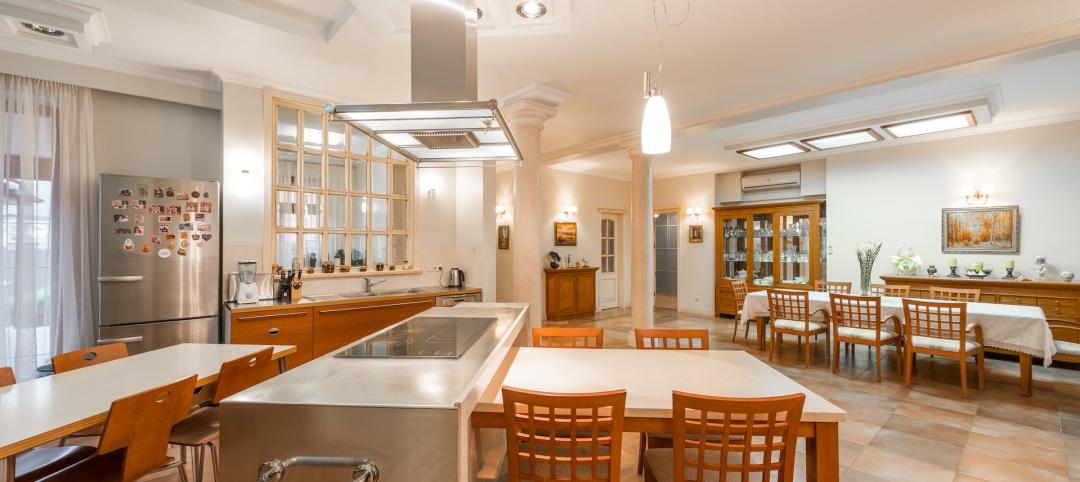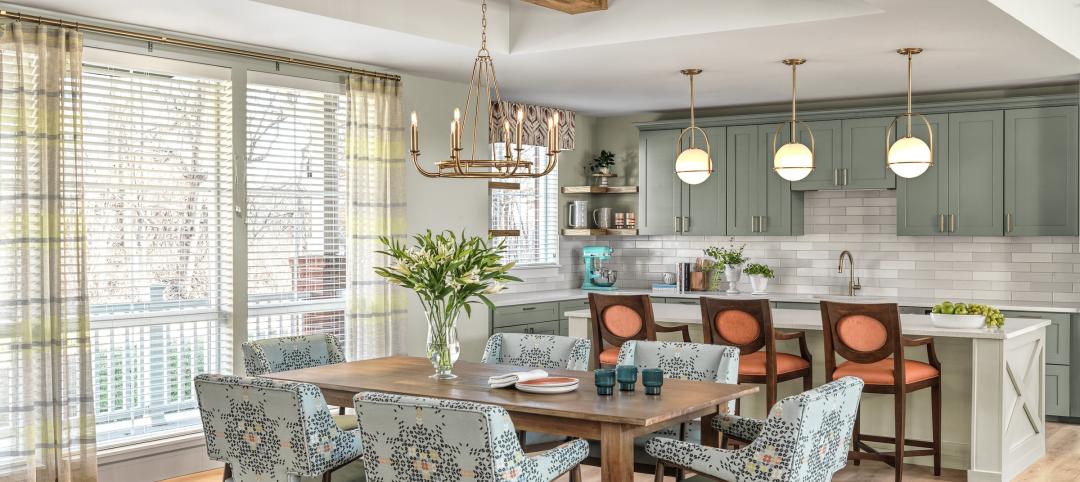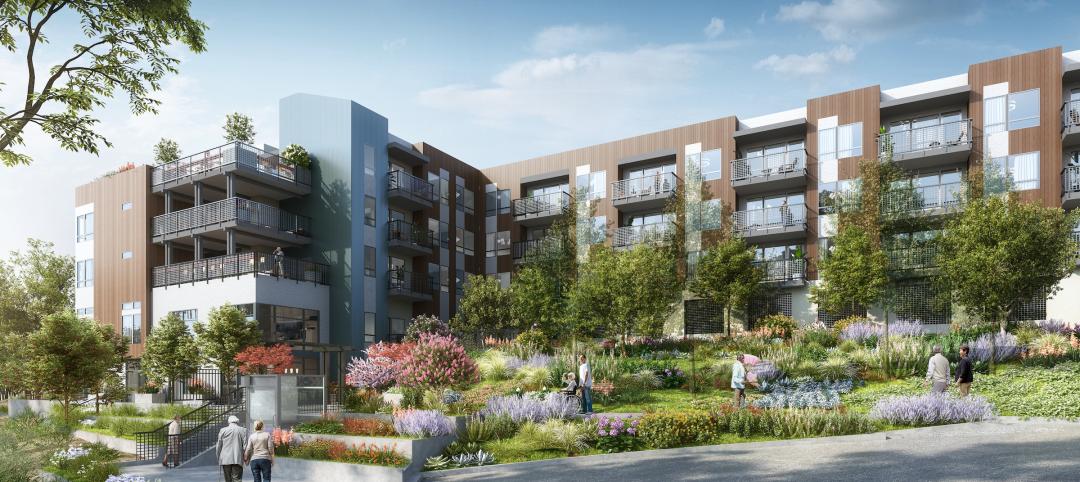LEARNING OBJECTIVES
After reading this article, you should be able to:
+ LIST 3 myths related to the use of video cameras in apartment and condominium communities.
+ DEFINE "choke points" and their application to the siting of video surveillance cameras.
+ DISCUSS several physical design factors that can impede the efficacy of video surveillance systems.
+ REVIEW the impact of intensity, uniformity, and color rendering in lighting and their effect on video cameras.
“Cameras can be part of a security program, but they’re not the security solution itself.” That’s the first thing to understand about video surveillance systems for apartment and condominium projects, according to veteran security consultant Michael Silva, CPP.
You need to establish your security needs and develop a comprehensive security plan in the early stages of design. “The questions that don’t get asked during the design phase are almost impossible to correct when the concrete’s being poured,” said Silva. (See our 2017 BDCuniversity AIA Course for guidance on creating a security plan.)
In most cases, you’ll want to hire a specialist to help you design your system. “It’s a professional skill,” said Silva, a Certified Protection Professional, considered the “gold standard” by ASIS International, the organization that certifies security professionals. “You wouldn’t want anyone but a structural engineer to tell you where to place your columns. Same idea for your video surveillance system.”
Some architectural and electrical engineering firms have security system specialists on staff, but if that’s not the case, said Silva, hire a reputable security consultant to help choose your video system and advise you on how to deploy it. (Best source for locating a qualified security consultant: International Association of Professional Security Consultants.)
In planning your system, you need to be aware of what Silva calls the “three dirty secrets” of video surveillance systems:
1. Video cameras rarely deter crime. Most petty criminals either know they’re being recorded or don’t care, because they know local police departments don’t have the manpower to investigate minor crimes.
2. Most recorded video is useless as evidence. The image quality is rarely good enough to present in court, said Silva, and it would be cost-prohibitive to have a system that, for example, covered every square foot of a parking garage just so a tenant could determine who backed into her car.
3. Even the most up-to-date “megapixel” security cameras won’t cure all your video surveillance problems. They can’t “see” through concrete columns, and they may not be focused at the right angle. (For more discussion of security cameras, see Silva's report, "Three Dirty Little Secrets about Video Surveillance Systems.")
In other words, despite what you see on “CSI” and “Law & Order,” video surveillance systems won’t completely prevent crime from happening on your property and won’t solve those crimes if they do happen. “Their primary purpose is to tell the story after the fact,” said Silva, so that the property manager can tell when and where an incident may have occurred and who may have been involved in it. Silva said he does encourage leasing offices and building managers to have a live video on display at all times, so that suspicious activity—“Who’s that person hanging around the loading dock?”—can be detected before something serious happens.
The most cost-effective route, said Silva, is to install cameras at “choke points”—critical intersections where cameras have the best chance of capturing a good image, such as the parking garage gate, the elevator lobby, and stairway entrances.
When you get to the point of actually specifying products, your security consultant should be able to give you a list of several reputable manufacturers to choose from. Silva recommends specifying security-grade cameras that work well on dark nights and in light fog (no video camera works well in dense fog, he noted) and that counteract headlight glare and lighting hot spots.
Don’t forget to check out the manufacturer’s support services. “If you get some product from outside the U.S., they may have only one domestic office for support, and it could be miles away,” Silva warned.
For a well-designed system you should budget about $2,000 per camera, including cabling, conduit, recording equipment, and installation, and negotiate downward with your supplier from that point, said Silva. But be aware that image quality can vary greatly even for the new megapixel cameras. “Cameras with a higher megapixel rating don’t necessarily produce better quality images than cameras with a lower megapixel rating,” he warns.
GET THE SECURITY LIGHTING RIGHT TO MAXIMIZE surveillance cameras IN APARTMENTS
Your video surveillance system won’t be effective if the intensity (the brightness of the light), uniformity (the consistency of the light level from place to place throughout the lighted area), and color rendering (how accurately the lighting renders colors) of the lighting aren’t right. This is especially true for outdoor lighting and lighting in parking garages.
Uniformity is the ratio of the maximum lighting level to the miminal lighting level in a specified area. Silva recommends a maximum uniformity ratio of 3:1 for most outdoor parking lot applications. If the uniformity ratio is too high, you’ll have “hot spots” (bright areas of glare) and “cool spots” (dark areas); in either case, the image quality will be poor.
In general, it’s better to have more lighting fixtures, more evenly spaced, than to rely on one or two high-powered luminaires. Silva further cautions against putting high-intensity lighting fixtures high up on your building and expecting them to “cover” the entire site; in most cases, the fixtures will not “spread” the light for optimal uniformity.
For courtyards, make sure you have adequate lighting along walkways. As they grow, trees and other plantings can block lighting, so be sure that landscaping is properly trimmed to prevent this.
For surface parking lots, Silva recommends an absolute minimum light level of one foot-candle throughout the entire area; 2–4 fc would be even better. Lighting in parking garages can be more difficult, given the many blockages from columns, elevator areas, etc.
Until recently, metal halide lamps were Silva’s preference for outdoor lighting; he said they’re still suitable for projects with smaller budgets. Now, however, Silva recommends LEDs. “They cost more than other systems, but they’re worth it,” he said.
He recommends LEDs that provide a white light spectrum, for more natural color rendition. “Architects will often specify colored lighting for aesthetic reasons, but for security purposes pure white light is best,” said Silva.
In siting the luminaires, minimize light intrusion into living spaces. You also want to use fixtures with shielding that guards against light pollution, especially if you’re going for LEED certification. |M|
For more from Michael Silva on lighting your parking lot for security, see lighting for security.
Related Stories
Mixed-Use | Jan 29, 2024
12 U.S. markets where entertainment districts are under consideration or construction
The Pomp, a 223-acre district located 10 miles north of Fort Lauderdale, Fla., and The Armory, a 225,000-sf dining and entertainment venue on six acres in St Louis, are among the top entertainment districts in the works across the U.S.
Sponsored | BD+C University Course | Jan 17, 2024
Waterproofing deep foundations for new construction
This continuing education course, by Walter P Moore's Amos Chan, P.E., BECxP, CxA+BE, covers design considerations for below-grade waterproofing for new construction, the types of below-grade systems available, and specific concerns associated with waterproofing deep foundations.
Multifamily Housing | Jan 15, 2024
Multifamily rent growth rate unchanged at 0.3%
The National Multifamily Report by Yardi Matrix highlights the highs and lows of the multifamily market in 2023. Despite strong demand, rent growth remained unchanged at 0.3 percent.
Adaptive Reuse | Jan 12, 2024
Office-to-residential conversions put pressure on curbside management and parking
With many office and commercial buildings being converted to residential use, two important issues—curbside management and parking—are sometimes not given their due attention. Cities need to assess how vehicle storage, bike and bus lanes, and drop-off zones in front of buildings may need to change because of office-to-residential conversions.
MFPRO+ News | Jan 12, 2024
Detroit may tax land more than buildings to spur development of vacant sites
The City of Detroit is considering a revamp of how it taxes property to encourage development of more vacant lots. The land-value tax has rarely been tried in the U.S., but versions of it have been adopted in many other countries.
MFPRO+ News | Jan 12, 2024
As demand rises for EV chargers at multifamily housing properties, options and incentives multiply
As electric vehicle sales continue to increase, more renters are looking for apartments that offer charging options.
Sustainability | Jan 10, 2024
New passive house partnership allows lower cost financing for developers
The new partnership between PACE Equity and Phius allows commercial passive house projects to be automatically eligible for CIRRUS Low Carbon financing.
Giants 400 | Jan 8, 2024
Top 60 Senior Living Facility Construction Firms for 2023
Whiting-Turner, Ryan Companies US, Weis Builders, Suffolk Construction, and W.E. O'Neil Construction top BD+C's ranking of the nation's largest senior living facility general contractors and construction management (CM) firms for 2023, as reported in the 2023 Giants 400 Report.
Giants 400 | Jan 8, 2024
Top 40 Senior Living Facility Engineering Firms for 2023
Kimley-Horn, Olsson, Tetra Tech, EXP, and IMEG head BD+C's ranking of the nation's largest senior living facility engineering and engineering/architecture (EA) firms for 2023, as reported in the 2023 Giants 400 Report.
Giants 400 | Jan 8, 2024
Top 80 Senior Living Facility Architecture Firms for 2023
Perkins Eastman, Hord Coplan Macht, Lantz-Boggio Architects, Ryan Companies US, and Moseley Architects top BD+C's ranking of the nation's largest senior living facility architecture and architecture engineering (AE) firms for 2023, as reported in the 2023 Giants 400 Report.
















